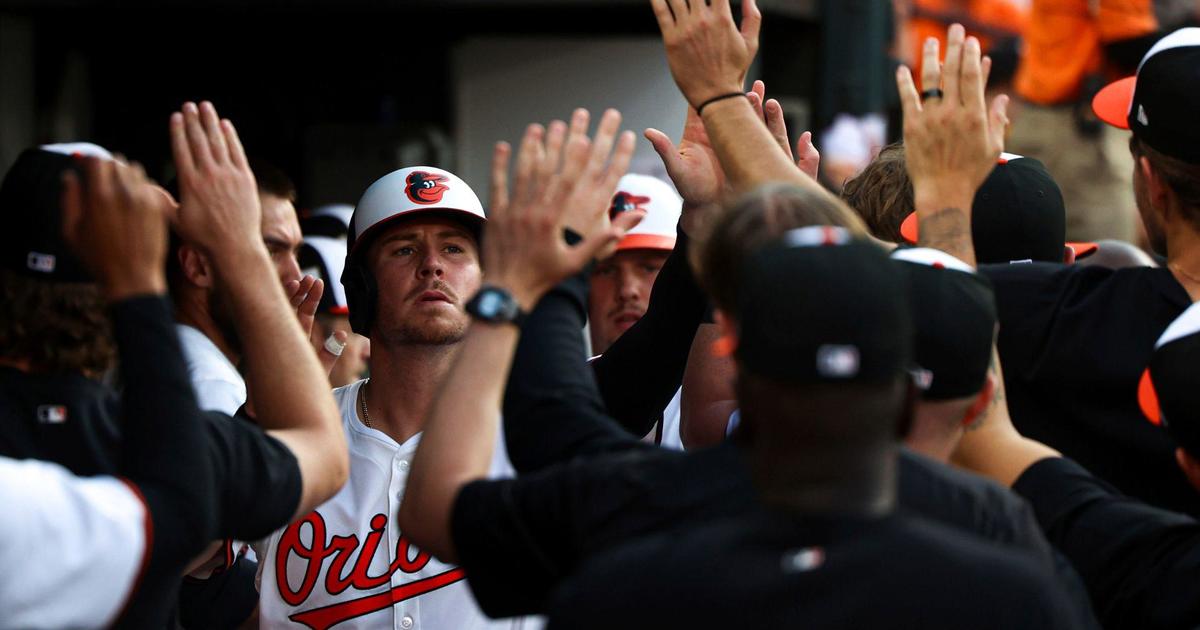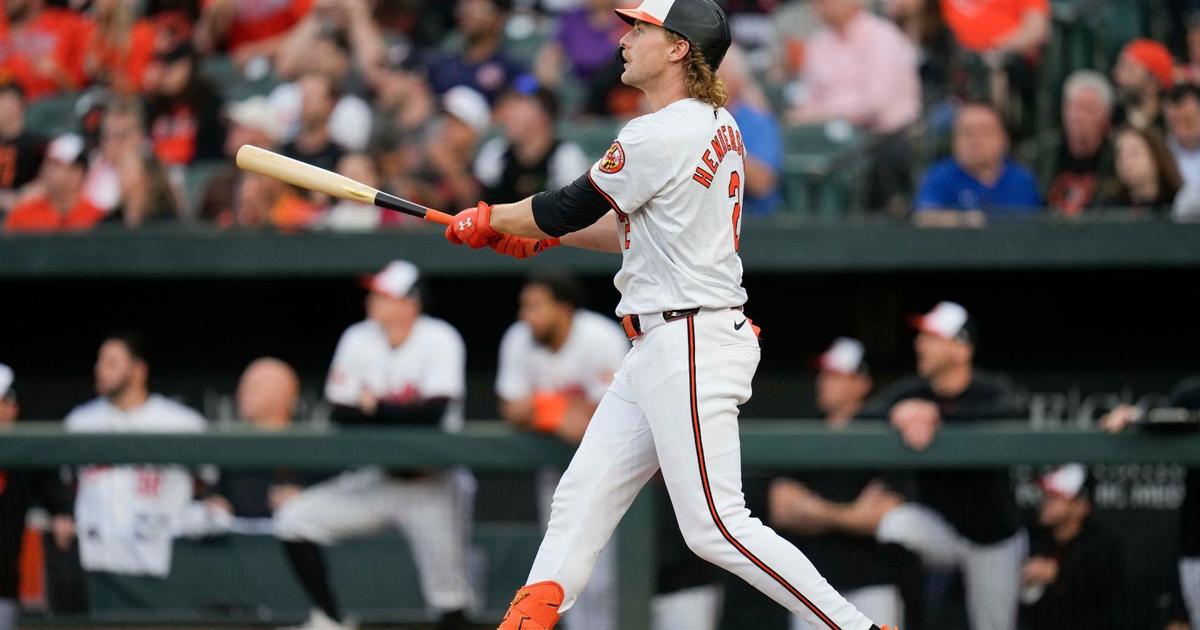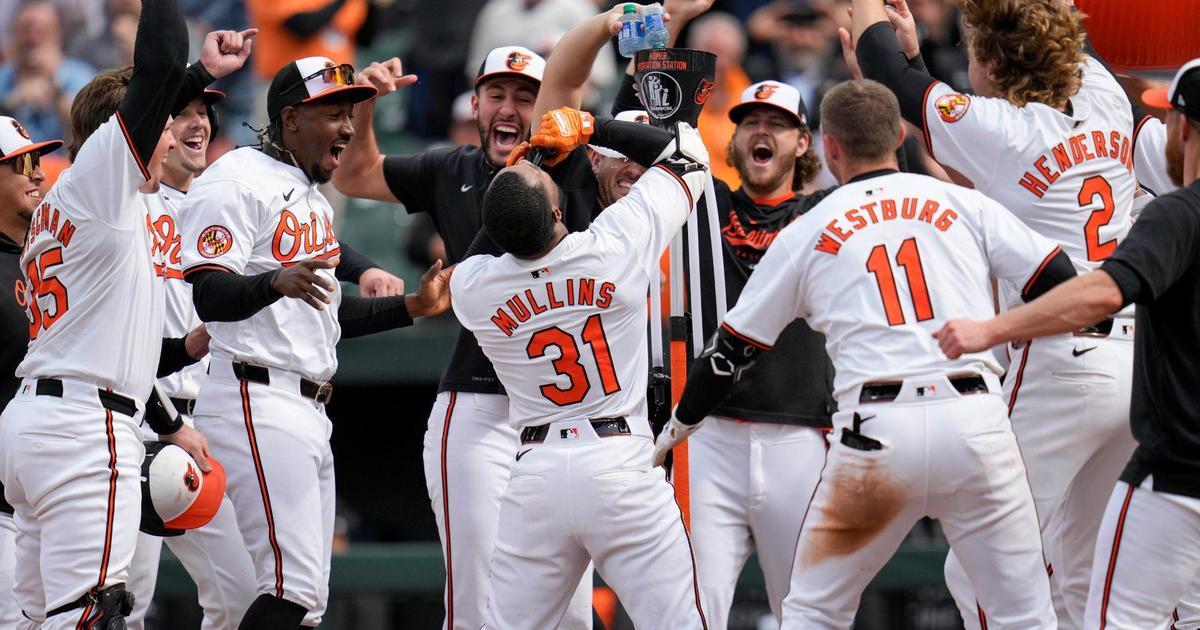New Teams Are Economic Boost To Washington And Baltimore
WASHINGTON (AP) — If you listen closely enough during the summer months in Washington's Navy Yard neighborhood, you might hear the crack of a bat smashing a baseball and a roaring crowd through the sound of jackhammers and drills.
The home to Nationals Park and the Washington Nationals since 2005 is under seemingly endless construction. In the last decade, the surroundings have transformed from high crime to high rise.
In 2003, The Washington Post reported so many rocks were thrown at Metro buses in Southeast Washington that bus drivers were instructed to wear safety goggles while navigating the area.
Now, the only flying objects bus drivers have to fear are home runs.
The turnaround began when the Montreal Expos moved from Quebec to the nation's capital in 2005, changing their name to the Nationals and bringing baseball back to Washington after a 33-year hiatus.
One of the first to bet on the neighborhood was Justin Ross, owner of Justin's Cafe and The Big Stick, two restaurants near the ballpark.
Ross opened his cafe in 2010. He said he remembered there wasn't much else around at the time. Seven years later, large pockets of apartment complexes, condos and restaurants have sprouted up, and men in hard hats fill the remaining open spaces.
It wouldn't have happened without the Nationals, Ross said.
"The Nats are the anchor to this whole thing," he explained.
The revitalization the Nationals sparked in the Navy Yard neighborhood is just one example of what relocation and expansion franchises can do for their new homes.
Consider the impact of a relocated team about 40 miles north of Nationals Park in Maryland's biggest city.
On March 28, 1984, the city of Baltimore was thunderstruck when Baltimore Colts owner Bob Irsay moved the team to Indianapolis in the middle of the night, ripping the heart out of the industrial city.
"I think the city's self-image suffered," said Tom Kelso, chairman of the Maryland Stadium Authority and a former Baltimore Colts fan. "We still had the Orioles, but that was the only professional team we had left. It was a very concerning and demoralizing time."
For 12 years, Baltimore was nearly without football, except for the Canadian Football League's Baltimore Stallions in 1994 and 1995. Then Art Modell moved his Cleveland Browns to the Charm City in 1996, restarting the once-strong NFL football culture with the Ravens.
In 2006, the Maryland Stadium Authority commissioned a study on the monetary value of the Ravens and the stadium built for them, M&T Bank Stadium.
The study found the stadium was worth almost $10 million a year in taxes and $216 million in economic activity. In 2007, the Ravens' payroll alone generated $15.5 million in taxes and $68.8 million in economic activity in the city, all because the players lived in the city at least during the season.
Kelso believes that impact wouldn't be felt if the stadium had been built in the suburbs, as some pushed for in the mid-1990s.
"(It) would never have taken place if those stadiums had been located out in the suburbs where people come, they park their car, they walk in the stadium, and when the event is over they get in their car and they leave," he said.
Not only has M&T Bank Stadium brought people into downtown Baltimore, it has become a greeting for the city. It sits next to Orioles Park at Camden Yards, which opened in 1992 and started the area revival, and together they act as a welcome mat for drivers approaching the city from the south on the Baltimore-Washington Parkway.
What used to be an abandoned rail yard with crumbling factories is now one of the city's proudest fixtures, a microcosm of what Kelso believes is the team's largest contribution to Baltimore.
"The biggest impact is the psychological impact," Kelso said. "We identify with the Ravens, and Baltimore is identified to a certain degree by the Ravens. I think it has had a tremendous impact on the way that people outside of Baltimore perceive us."
New teams can bring new life to all areas — even outside of the United States.
When the first iteration of the Winnipeg Jets departed in 1996, the city was crushed, much like Baltimore was 12 years earlier.
"When the Jets left, it was a real kick in the gut to the city," said Chuck Davidson, president and CEO of the Manitoba Chamber of Commerce and 25-year Winnipeg resident. "It took a lot of what some would say the heart out of the city at the time. It took this community a long time to recover."
The first major step in bringing the NHL back to Winnipeg was the construction in 2004 of the MTS Centre downtown, a hopeful home for an NHL franchise in the future. Previously, an empty multi-story retail building occupied the space and was considered an eyesore on Winnipeg's major street, Portage Avenue.
The Manitoba Moose of the American Hockey League resided in the arena, which helped the downtown area some, Davidson said. While the Moose were bringing several thousand people to the area each game, their family-friendly atmosphere that catered to children was never going to do enough to completely change the face of the city's downtown, according to Davidson. But it did enough to help achieve the ultimate goal.
In 2011, the Atlanta Thrashers traveled north to their new home to become the second edition of the Winnipeg Jets. The city celebrated in a way it hadn't in more than a decade.
"When it was announced that the Jets were coming back, young people shut down Portage and Main (Street) to play road hockey," Davidson said. "It was all courted off and it was the coolest thing."
Finally, Winnipeggers had their team back, and with that the sense of pride they lost in 1996.
"It makes us feel like, you know what, we're back in the NHL and we're the same level as the Torontos and the LAs and the New Yorks, and that wasn't something we could say prior to the Winnipeg Jets being here," Davidson said. "It allows people in Winnipeg to stand out their chest a little bit, and I think it's really increased pride in our community."
The Jets have brought more people to downtown and new businesses and housing options have grown in kind.
Jon Dueck, the general manager of Shark Club Winnipeg, said the restaurant chain wouldn't have opened its location next to the MTS Centre when it did four years ago if not for the Jets.
"Our busiest nights are Jets nights," Dueck said. "Whether that's a Saturday, a Friday, a Tuesday, a Monday, we see a huge increase. We pretty much have 10 times the amount of staff those nights than for non-Jets nights. If you don't get here with two hours to spare (before puck drop), you won't find a table."
Dueck's example provides insight into the renaissance of downtown Winnipeg.
Just 10 years ago, you could have walked along Portage Avenue and been faced with boarded up windows and a desolate downtown. Now, office buildings and condos line the way to the MTS Centre with fans in Jets jerseys populating the sidewalk, a token of gratitude for the revitalization.
"Our economy, there's no question it's benefited," Davidson said. "You've seen a population increase within the city of Winnipeg substantially over the last number of years. There's a clear correlation."
With a diverse economic base and a growing immigrant communities, Winnipeg added more than 40,000 residents between 2011 to 2015, taking the total population past 700,000, according to the city of Winnipeg's statistics. The city is projected to reach 1 million people by 2033.
Old and new Winnipeggers have gotten to enjoy the same satisfaction as Baltimoreans and Washingtonians in welcoming back a team, giving each of the cities a reason to hold their heads high.
"It's given us our swagger back," Davidson said. "We are a major league city again."
There are other success stories, too. Indianapolis was known as "Nap Town" in the 1960s, and now through its sports teams and a downtown revitalization that the Los Angeles Times called "breathtaking," the city is thriving.
In 2015, Oklahoma City government said each home game of the NBA's Thunder generated a direct economic impact of $1.5 million for the city.
The Greater Memphis Chamber commissioned a study in 2010 on the economic impact of the NBA Grizzlies that found the team generated more than $223 million annually for Shelby County and created 1,534 jobs.
But that doesn't necessarily mean tax dollars to pay for stadiums and amenities is the right way for cities to go. A 2014 study by the University of Kentucky recommended cities use economic development as a reason for forking over cash to teams. But, it noted that if lawmakers do offer public funding, it "should be for social reasons such as maintaining quality of life or civic pride."
Many economists, however, insist professional sports teams are insignificant in overall urban economies.
"There is no impact," Temple University sports economist Michael Leeds told Marketplace in 2015. "If every sports team in Chicago were to suddenly disappear, the impact on the Chicago economy would be a fraction of 1 percent."
But Ross believes the Navy Yard neighborhood wouldn't be what it is today without the Nationals residing in the area's most recognizable building.
"If they weren't here, I don't think this would be happening," Ross said.



